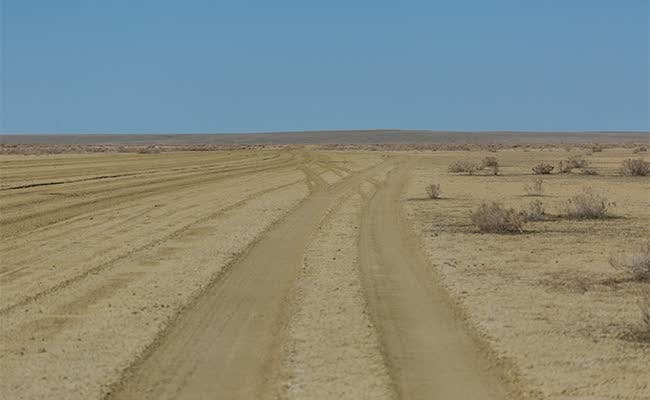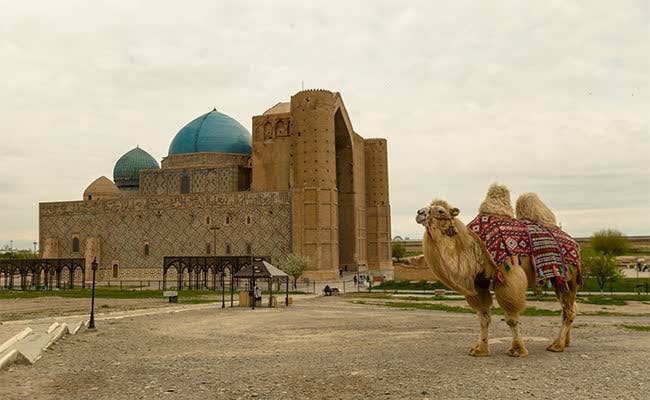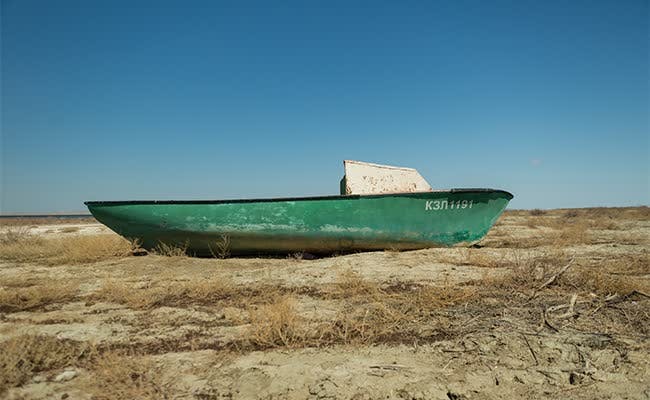The Aral Sea
The Aral Sea, once one of the world's largest inland bodies of water, is located in Central Asia, spanning the borders of Kazakhstan and Uzbekistan. Historically, it was known for its abundant fish stocks and its importance as a vital water source for the surrounding region. However, the Aral Sea has experienced a severe ecological and environmental crisis over the past few decades due to human activities.
Here are some key points about the Aral Sea:

Historical Background: The Aral Sea was originally formed by the inflow of the Amu Darya and Syr Darya rivers, which provided a constant water supply to the sea. It was once the fourth-largest lake in the world, covering an area of about 68,000 square kilometers (26,300 square miles).
Environmental Crisis: The Aral Sea began to shrink dramatically in the mid-20th century due to irrigation projects that diverted water from the two major rivers to support agriculture in the region. As a result, the sea started to lose water, and its surface area decreased significantly.
Consequences: The shrinking of the Aral Sea has had severe consequences, including the loss of livelihoods for local communities that relied on fishing, the exposure of previously submerged toxic chemicals on the exposed lakebed, and the creation of an inhospitable and dusty environment.
Split into Smaller Lakes: The original Aral Sea has effectively split into two smaller bodies of water: the North Aral Sea (located primarily in Kazakhstan) and the South Aral Sea (mostly in Uzbekistan). Efforts to stabilize and restore the North Aral Sea have seen some success, leading to increased water levels and the revival of fish populations in that part of the sea.
International Efforts: Various international organizations and countries, including the World Bank, the United Nations, and local governments, have been involved in efforts to address the Aral Sea crisis. These efforts aim to improve water management, reduce environmental damage, and restore the ecosystems surrounding the sea.
Environmental and Human Impact: The shrinking of the Aral Sea has caused a significant negative impact on the environment, health, and economy of the region. The exposed lakebed has become a source of dust storms, and the sea's salinity has increased, leading to further environmental degradation.
The Aral Sea serves as a prominent example of the environmental consequences of unsustainable water use and irrigation practices. Efforts to mitigate the crisis and restore the sea's ecological balance continue, but the ecological changes that have occurred are long-lasting and continue to affect the surrounding regions.
RELATED DESTINATIONS
The Muyunkum Desert, also spelled as "Moynaqum" or "Moyunqum," is a desert located in southern Kazakhstan, near the border with Uzbekistan.
The Mausoleum of Khoja Ahmed Yasawi is one of the most significant historical and architectural landmarks in Kazakhstan. It is located in the ancient city of Turkistan in the southern part of the country.
The Aral Sea, once one of the world's largest inland bodies of water, is located in Central Asia, spanning the borders of Kazakhstan and Uzbekistan. Historically, it was known for its abundant fish stocks and its importance as a vital water source for the surrounding region. However, the Aral Sea has experienced a severe ecological and environmental crisis over the past few decades due to human activities.


